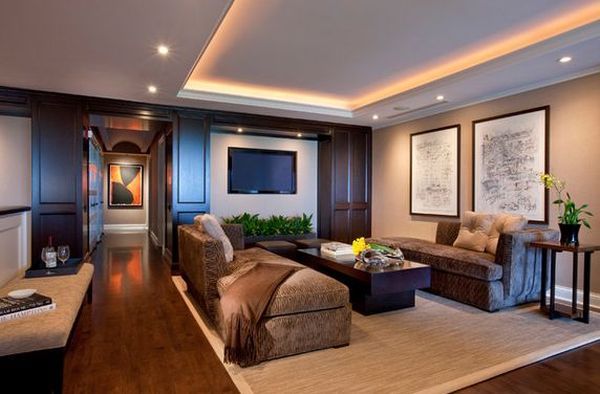Discover innovative lighting solutions and design strategies to illuminate your high ceiling living room effectively and stylishly.

Lighting High Ceiling Living Room: Illuminating Elegance
A living room with a high ceiling presents a unique set of challenges and opportunities when it comes to lighting. High ceilings can create a sense of grandeur and openness, but they also require careful planning to ensure the space is well-lit and visually cohesive. In this guide, we will explore various lighting options and design considerations to help you make the most of your high ceiling living room.
The Importance of Proper Lighting
Proper lighting is crucial in any room, but it becomes even more significant in spaces with high ceilings. Here are some reasons why:
- Ambiance: The right lighting sets the mood and creates a welcoming atmosphere.
- Functionality: Adequate lighting ensures that the room is functional for various activities.
- Aesthetics: Lighting enhances the architectural features and decor of the room.
- Safety: Good lighting reduces the risk of accidents by illuminating potential hazards.
Lighting High Ceiling Living Room: Key Strategies
1. Layered Lighting
Layered lighting is the most effective approach for a high ceiling living room. It involves using multiple light sources at different levels to create a balanced and well-lit space. The three main types of lighting to consider are:
Ambient Lighting
Ambient lighting provides the overall illumination of the room. In a high ceiling living room, this can be achieved with:
- Chandeliers: A grand chandelier can be a stunning focal point and provide ample light.
- Pendant Lights: Pendant lights can be hung at varying heights to create interest and spread light evenly.
- Recessed Lighting: Recessed lights installed in the ceiling offer a clean look and broad coverage.
Task Lighting
Task lighting is essential for activities such as reading, working, or entertaining. Consider the following options:
- Floor Lamps: Tall floor lamps can bridge the gap between the high ceiling and the lower living space.
- Table Lamps: Place table lamps on side tables to provide focused light where needed.
- Wall Sconces: Wall sconces add an extra layer of light without taking up floor space.
Accent Lighting
Accent lighting highlights architectural features, artwork, or decorative elements. It adds depth and dimension to the room. Options include:
- Track Lighting: Adjustable track lighting can be directed to spotlight specific areas or objects.
- LED Strips: LED strips can be installed along beams or moldings to accentuate the room’s height and structure.
- Picture Lights: Use picture lights to illuminate artwork or photographs on the walls.
Choosing the Right Fixtures
Chandeliers
Chandeliers are a popular choice for high ceiling living rooms due to their dramatic effect and ability to fill vertical space. When selecting a chandelier:
- Size: Ensure the chandelier is proportionate to the room’s size. A large, ornate chandelier can dominate a spacious living room, while a smaller, simpler design may be more appropriate for a smaller space.
- Height: Hang the chandelier at a height that allows it to be seen but not obstruct the view. Generally, the bottom of the chandelier should be 7-8 feet above the floor.
- Style: Choose a chandelier that complements the room’s decor. Whether it’s modern, traditional, or rustic, the fixture should enhance the overall design.
Pendant Lights
Pendant lights offer versatility and can be used in various configurations:
- Clustered: Grouping multiple pendants at different heights can create a dynamic look and provide ample light.
- Linear: A row of pendant lights over a seating area or along a hallway can provide focused illumination.
- Single Statement Piece: A large, single pendant light can serve as a striking focal point.
Recessed Lighting
Recessed lighting is ideal for providing unobtrusive, even lighting throughout the room:
- Placement: Distribute recessed lights evenly across the ceiling to avoid dark spots. Consider dimmable options for adjustable ambiance.
- Beam Spread: Use wide beam spreads for general lighting and narrower beams for accent lighting.
Enhancing Natural Light
In addition to artificial lighting, maximizing natural light can enhance the brightness and feel of a high ceiling living room:
Windows
Large windows can flood the room with natural light:
- Drapery: Use sheer or light-colored drapes to allow maximum light penetration.
- Placement: Consider floor-to-ceiling windows or transom windows above standard windows to increase light intake.
Skylights
Skylights are an excellent option for high ceilings:
- Fixed Skylights: These provide constant light and are ideal for rooms with high ceilings.
- Ventilated Skylights: These can be opened to allow for ventilation as well as light.
Maintaining Balance and Harmony
While lighting is crucial, maintaining balance and harmony in the room is also important:
Scale and Proportion
Ensure that furniture and decor are proportionate to the room’s height:
- Tall Furniture: Use tall bookshelves, cabinets, or plants to draw the eye upward and fill vertical space.
- Layering: Layering rugs, cushions, and throws can add warmth and texture to the lower half of the room.
Color Scheme
Choose a color scheme that complements the lighting and enhances the room’s height:
- Light Colors: Light colors reflect light and make the room feel larger and brighter.
- Accent Colors: Use darker or bold colors sparingly to create contrast and interest.
Conclusion
Lighting a high ceiling living room requires a thoughtful approach that combines functionality, aesthetics, and balance. By using layered lighting, choosing the right fixtures, enhancing natural light, and maintaining harmony with the room’s design, you can create a beautifully illuminated space that is both inviting and visually stunning. Explore different lighting options and design elements to find the perfect solution for your high ceiling living room.
